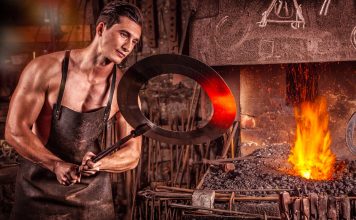At the historic site where Ettore Bugatti once laid the cornerstone of his company, Bugatti’s current president, Dr. Ing. Franz-Josef Paefgen emphasised that the Galibier is one of several concept studies with which the company is considering for the future of the Bugatti marque.
Art – Forme – Technique: those are the brand values to which Ettore Bugatti and his son Jean oriented themselves in order to develop even more powerful engines and even more noble body designs for each new model, which were without equal in quality, handling, speed and elegance. In the process, they experimented again and again without compromise with new materials; thus was Bugatti one of the first manufacturers to use aluminium parts for bodies, engine blocks and wheels.
Art – Forme – Technique are also the brand values to which the design and engineering team of Bugatti Automobiles S.A.S. oriented themselves in the development of the Galibier. With this new four-door concept car, Bugatti assumes anew a leading role in the use of new material combinations. Thus the body is constructed of handmade carbon fibre parts coloured dark blue so that, when illuminated, the woven structure shimmers through strikingly. Carbon fibre not only possesses unusually great rigidity but is also especially light. The wings and doors are out of polished aluminium.
The Galibier’s design masters the challenge of uniting sportiness with the comfort and elegance of a modern four-door saloon. The basic architecture picks up on the torpedo-like character of the Type 35, which was already revived in the Veyron, and reinterprets it. With the typical Bugatti radiator grille, big round LED headlights and the clamshell running the length of the vehicle which became synonymous with the brand identity under Jean Bugatti in the Type 57, this car transports the Bugatti genes into the modern world.
Beneath the bonnet, which folds back from both sides, there resides a 16-cylinder, 8-litre engine with twostage supercharging. What makes this engine special is that it was developed as a flex-fuel engine and can optional be run on ethanol. Four-wheel drive, specially developed ceramic brakes and a new suspension design enable the agile, always-sure handling of a saloon of this size.
The interior reflects the elemental design of the exterior. The dash panel has been reduced to the essential; two centrally located main instruments keep even the rear passengers constantly informed of the actual speed and previous performance. Parmigiani, the Swiss maker of fine watches, created the removable Reverso Tourbillon clock for the Galibier, which may be worn on the wrist thanks to a cleverly designed leather strap.
“Galibier” is not just the name of one of the most difficult alpine passes along the Tour de France but, in its time, was a version of the four door Type 57 unequalled in sportiness and elegance.


































